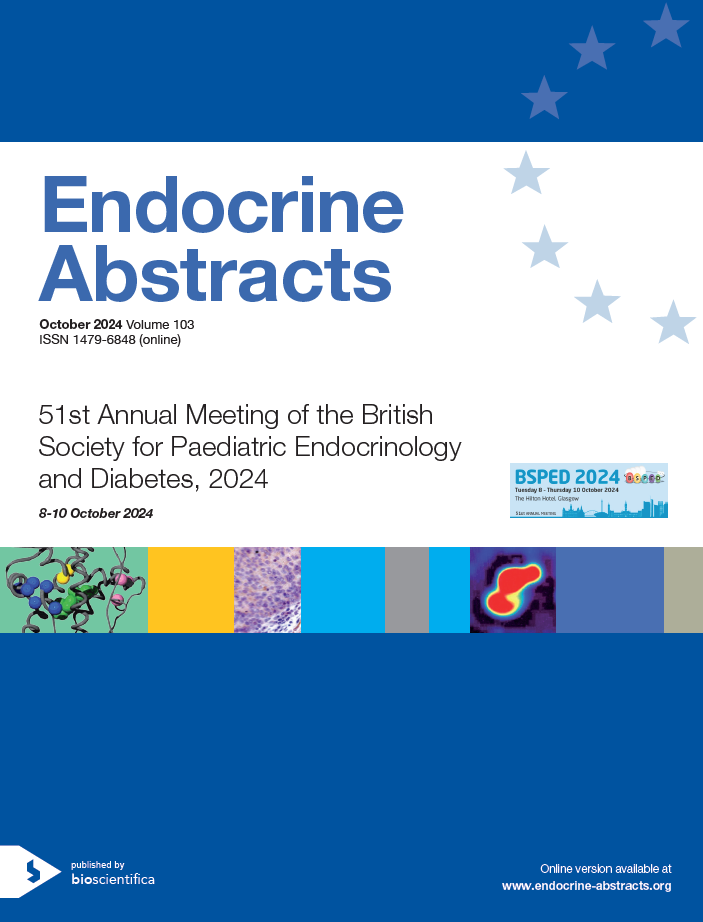
51st Annual Meeting of the British Society for Paediatric Endocrinology and Diabetes
Glasgow,
UK
08 Oct 2024 - 10 Oct 2024

Poster Presentations
Pituitary and Growth
ea0103p60 | Pituitary and Growth | BSPED2024
Pituitary stalk interruption syndrome (PSIS) in a newborn with PROP1 mutation
Edavana Shaju , Ramachandran Sibi , Moolath Sahla , Kottilil Latheesh
ea0103p61 | Pituitary and Growth | BSPED2024
Pubertal development and bone growth following discontinuation of testosterone therapy for management of delayed puberty in glucocorticoid treated young adults with duchenne muscular dystrophy
Smillie Rachel , McCauley Cara , Dunne Jennifer , Horrocks Iain , Joseph Shuko , Wong Sze Choong.
ea0103p62 | Pituitary and Growth | BSPED2024
Spectrum of endocrinopathies in children with ectopic posterior pituitary correlates with severity of associated hypothalamo-pituitary abnormalities on imaging: decade long experience from two tertiary centres
Malhotra Neha , Camia Tiziana , Cerbone Manuela , Iorgi Natascia Di. , Maghnie Mohamad , Dattani Mehul
ea0103p63 | Pituitary and Growth | BSPED2024
Accuracy of arginine testing as first test for diagnosing growth hormone deficiency in children
Balagamage Chamila , Hashim Raihana , Harding Eleanor , Sakka Sophia , Mohamed Zainaba , Dias Renuka
ea0103p64 | Pituitary and Growth | BSPED2024
Clinical assessment for and response to growth hormone in a tertiary paediatric endocrine service: social and gender factors
Jones Lily , Alexopoulou Vasiliki , Das Urmi , Dharmaraj Poonam , Didi Mohammed , Laing Peter , Ramakrishnan Renuka , Senniappan Senthil , Yung Zoe , Blair Joanne
ea0103p65 | Pituitary and Growth | BSPED2024
A single-centre retrospective study looking at copeptin levels in children and young people who underwent water deprivation test
Easa Habab , Lokulo-Sodipe Oluwakemi , Ryan Fiona J.
ea0103p66 | Pituitary and Growth | BSPED2024
Effect of recombinant growth hormone therapy in chromosome 15q26.3 deletion encompassing the IGF1R
Roy Kakali , Chandwani Manju , Abithakujambal Vellore , Giri Dinesh
ea0103p67 | Pituitary and Growth | BSPED2024
To evaluate how a dose of 0.10units/kg vs 0.15units/kg of insulin affects the success rate of the ITT in pubertal children
Gilbert Jennifer , Makaya Taffy , Roome Claire



